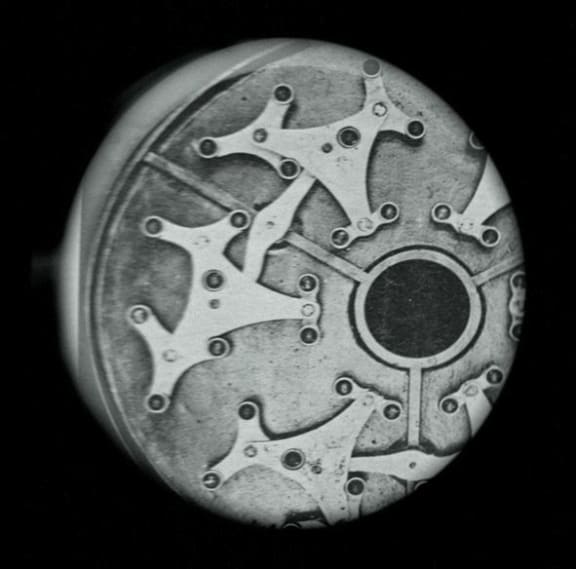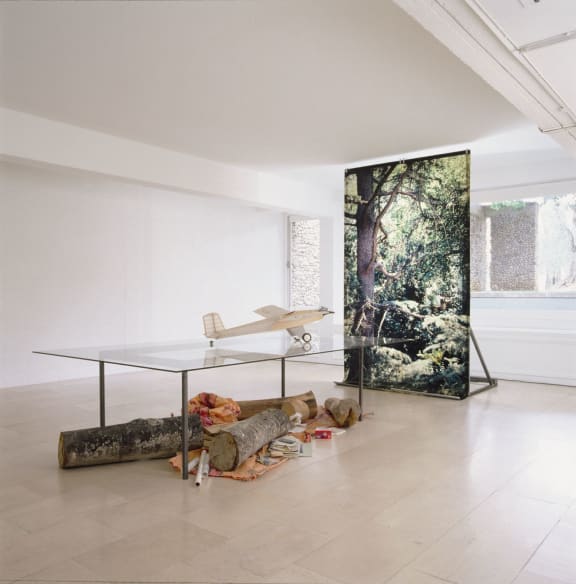The New Zealand Festival features many live theatre and music performances but there are also several arts exhibitions requiring specialist assembly. NICK BUTCHER reports.

A film still of Simon Starling's In Speculum (Studio Edit) 2013. Photo: The Modern Institute / Toby Webster Ltd, Glasgow
The festival in Wellington runs until mid-March and while most installations in it are often a series of paintings carefully positioned and fixed to low and wide gallery walls, or sculptures mounted in corners or centres of large empty rooms, other exhibitions are much more technical.
The assembly process for artist Simon Starling's In Speculum at Wellington's City Gallery was a complicated one. That's because the coveted 2005 Turner Prize-winning British artist is a conceptual artist whose work explores the relationships between art, technology, history and modernity.
It is bold, adventurous, requires tool kits to put together - and it's difficult to visualise what's being created until that final screw in in place.
The main piece, Wilhelm Noack, is named after a Berlin metal fabricating company closely tied to the political and cultural history of the city throughout the past two centuries.
That company had connections with the Bauhaus and international modernism, and worked on projects for the Third Reich.
Starling says it looks like a spiral staircase, but it is actually a loop machine for running a four-minute film, which is the story of Wilhelm Noack's 120-year history.
The company made prototypes for Mies van der Rohe and even lamp shades for Hitler's chief architect Albert Speer, he says.
Electrician required
Exhibitions manager Gerda Nana says this piece will require several contractors, including an electrician.
It's a slow job as each arm of the spiral loop machine has a roller at the end where the film runs through, he says. Surgical adjustments need to be made to ensure the film image is square when it is reproduced on to the wall.
New Zealand Film archive projectionist Oscar Halberg is working on assembling that part of Starling's tribute to old Berlin's metal fabricators and says that, after close examination of the 35mm film Bauer projector being used for the exhibit, it is classic and from the 1930s era.
City Gallery registrar Amber Baldock is involved in another of Starling's complicated film exhibits, utilising two venus mirrors which each weigh 50kg, along with another projector which has to be assembled.

Simon Starling's Le Jardin Suspendu installation, at a previous exhibition. Photo: J Brasille
She says they're part of a piece called Black Drop, spread across two rooms, and the film tells the story of the relationship between astronomy, photography and the beginnings of moving image technology.
New walls had to be built for this exhibit and a conical hole cut through to project a film lense through, Ms Baldock says.
It took about 10 days to complete the Starling installation, from building and painting walls to electrical work.
Massey University associate professor and art school head Heather Galbraith says what's impressive about Starling is his use of technologies which are no longer current but which he still sees as relevant.
Starling questions why they're abandoned, and highlights this by using a film medium that has also been long since replaced, she says.

